Infants' reasoning about hidden objects: evidence for event-general and event-specific expectations
- PMID: 15484586
- PMCID: PMC4215973
- DOI: 10.1111/j.1467-7687.2004.00357.x
Infants' reasoning about hidden objects: evidence for event-general and event-specific expectations
Abstract
Research over the past 20 years has revealed that even very young infants possess expectations about physical events, and that these expectations undergo significant developments during the first year of life. In this article, I first review some of this research, focusing on infants' expectations about occlusion, containment, and covering events, all of which involve hidden objects. Next, I present an account of infants' physical reasoning that integrates these various findings, and describe new experiments that test predictions from this account. Finally, because all of the research I discuss uses the violation-of-expectation method, I address recent concerns about this method and summarize new findings that help alleviate these concerns.
Figures

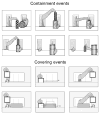


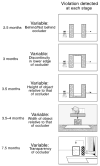


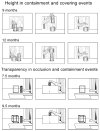

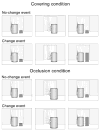
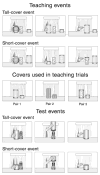



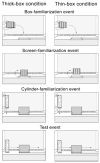
Comment in
-
Is looking good enough or does it beggar belief?Dev Sci. 2004 Sep;7(4):415-7; discussion 422-4. doi: 10.1111/j.1467-7687.2004.00358.x. Dev Sci. 2004. PMID: 15484587 No abstract available.
-
Who's for learning?Dev Sci. 2004 Sep;7(4):417-9; discussion 422-4. doi: 10.1111/j.1467-7687.2004.00359.x. Dev Sci. 2004. PMID: 15484588 No abstract available.
-
Reasoning...what reasoning?Dev Sci. 2004 Sep;7(4):419-21; discussion 422-4. doi: 10.1111/j.1467-7687.2004.00360.x. Dev Sci. 2004. PMID: 15484589 No abstract available.
References
-
- Aguiar A, Baillargeon R. Eight-and-a-half-month-old infants’ reasoning about containment events. Child Development. 1998;69:636– 653. - PubMed
-
- Aguiar A, Baillargeon R. 2.5-month-old infants’ reasoning about when objects should and should not be occluded. Cognitive Psychology. 1999;39:116–157. - PubMed
-
- Arterberry ME. Perception of object properties over time. In: Rovee-Collier C, Lipsitt LP, editors. Advances in infancy research. Vol. 11. Greenwich, CT: Ablex; 1997. pp. 219–268.
Publication types
MeSH terms
Grants and funding
LinkOut - more resources
Full Text Sources
Medical
Miscellaneous

